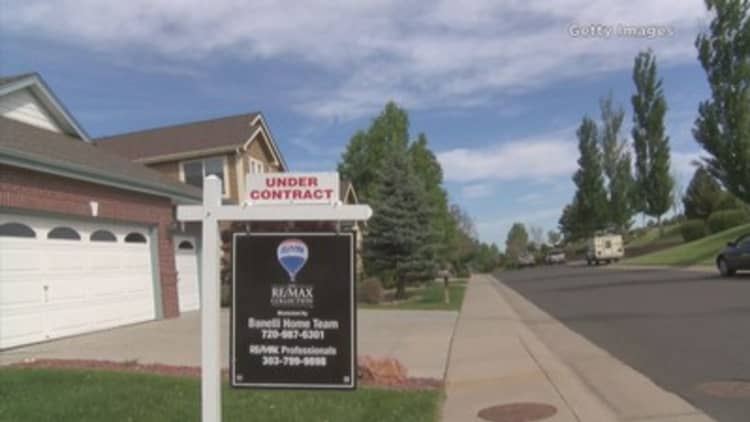
The supply of homes for sale is now at the lowest level since the National Association of Realtors began tracking inventory 18 years ago.
While all real estate is local, the problem is national. From coast to coast, buyers shopping in this spring market are finding less and less. What is listed is going fast — and selling at a premium.
In Southern California, home sales in February were 14 percent lower than the average for the month going back 30 years, according to CoreLogic. There are plenty of potential buyers out shopping, but they simply can't afford what they find.
"Activity continues to be constrained by the decline in affordability and the relatively thin inventory of homes for sale," said Andrew LePage, research analyst at CoreLogic. "San Bernardino County, which has the region's lowest median sale price and entices many first-time buyers and others priced out of coastal markets, was the only Southern California county to post a year-over-year increase in sales this February."
Housing starts are still only about 75 percent of their historical average, and what the builders are putting up is in the pricier, move-up category. The biggest problem is starter homes — the severe lack of them. Builders say their costs for land, labor and materials are too high right now, and starter homes squeeze their margins.
The median price of a newly built home did fall 5 percent in February, according to the U.S. Census, which could be a good sign or a monthly aberration.
"It's hard to understate how important it will be for builders to continue adding new inventory to the market, especially in the low- and mid-priced segments where so much of the current home buyer demand lies," said Svenja Gudell, chief economist at Zillow, who applauded the February price drop.
"But a few months of good progress won't meaningfully change the dynamics of this year's home shopping season — inventory is tight, competition will be fierce, and buyers need to be prepared to weather some frustration and show a lot of patience."
But builders aren't the whole crux of the problem. During the housing crash, investors purchased about 4 million distressed properties, the vast majority of them low-priced, starter homes. The expectation was that they would wait until home prices recovered and then sell them back out into the market. That has not happened, despite home prices exceeding their previous peak in some markets.
"Investors came in to get that cash flow, and the cash flow remains very positive," said Lawrence Yun, chief economist at the National Association of Realtors. "The price appreciation is just extra gravy that they're witnessing, and they're saying they're going to ride out this price increase."
Strong price appreciation may also be adding to the lack of supply of homes for sale. On average, the more a local market has recovered, the larger the drop in inventory it's seen, according to a new survey by Trulia.
"If you have a lot of equity in your home, that could be great to use to buy another one, but if that other home you might buy is that much more expensive than it was last year, you may stay put and you may renovate instead," said Ralph McLaughlin, chief economist at Trulia.
In fact the remodeling industry has already seen big gains in the past year and expects more. Not only are homeowners doing more projects, they're doing more expensive projects because now they have the home equity to afford them.
"During the economic downturn people were just doing the necessary maintenance on their home, and they weren't doing a lot of discretionary or lifestyle improvements. Now we're starting to see those discretionary and lifestyle improvements happen," said Brad Hunter, chief economist at HomeAdvisor, a remodeling website. "People are going for their dream home more than before."
That may bode well for home improvement retailers, but it does nothing to ease the supply shortage for potential homebuyers.


